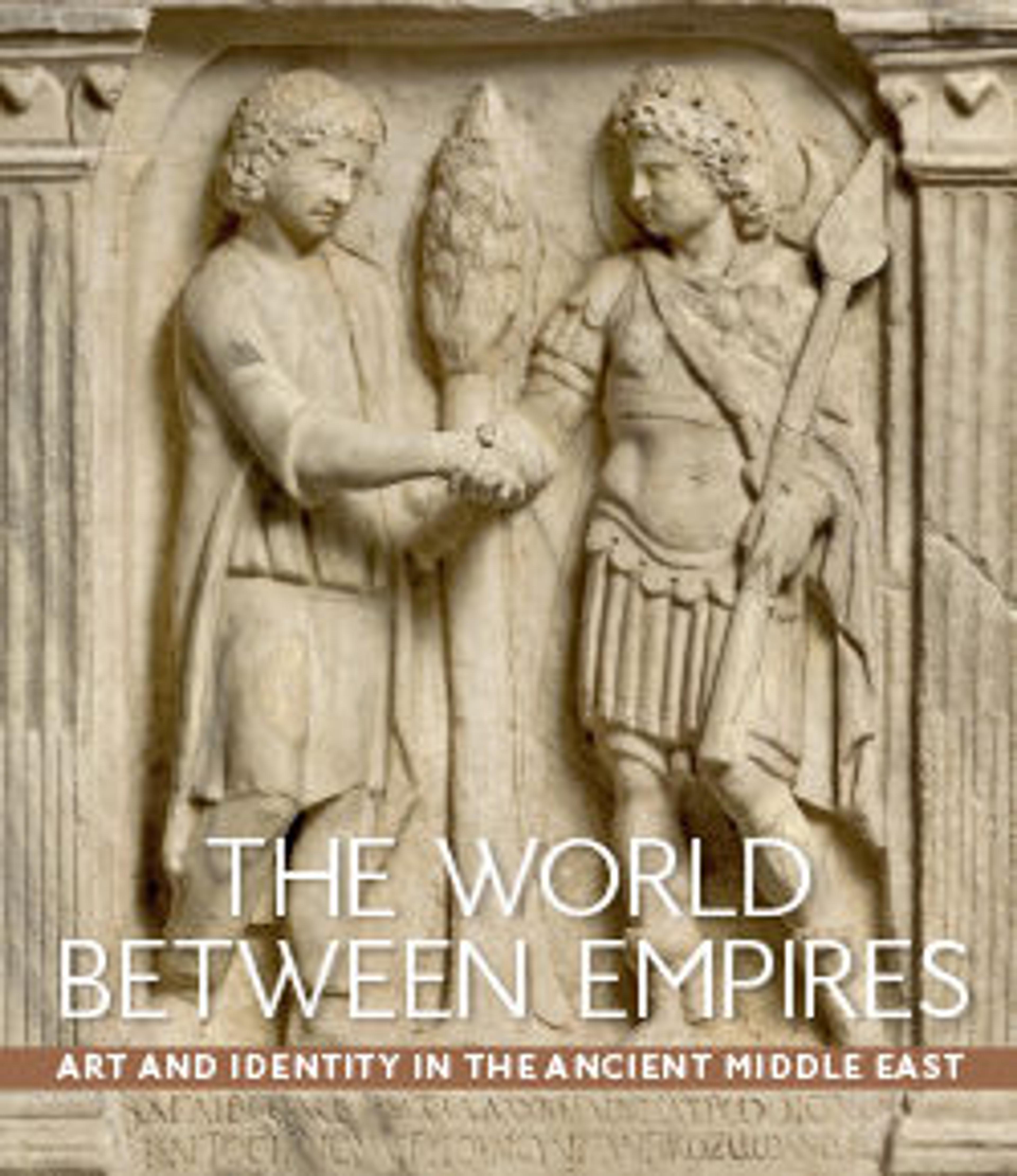Tetradrachm
Numismatists – the scholars who study coins – refer to the ‘front’ side of the coin, which usually features the head of a person or god, as the ‘obverse,’ and the ‘back’ side as the ‘reverse.’
On the obverse of this silver tetradrachm coin, a bust of the king faces to the left. He has a long beard rendered with vertical lines, and wears a domed hat with earflaps (called a ‘tiara’) with a diadem (the headband worn by victorious athletes in ancient Greece) tied over it. He also wears a necklace. His large eye is represented by a raised dot between two thick lines which serve as his eyelid. A border of dots surrounds the image.
The reverse shows a seated man facing left. A woman stands before him facing right. In her outstretched hand she holds a diadem. The figures are surrounded by a Greek inscription which cannot easily be read, since most of it disappears off the edge of the coin; however, it can be reconstructed from other examples as reading "of the king of kings Arsaces the generous, just, renowned and Greek-loving." The Greek letters ΔKΦ appear above the figures. This is the number 524, and refers to the date of the coin: year 524 of the Seleucid era (which began in 312 B.C.), that is, A.D. 212-13.
This coin was struck by the Parthian king Vologases V (reigned ca. A.D. 208–228) at Seleucia-on-the-Tigris near modern Baghdad. Seleucia was captured by the Parthians in 141 B.C., but the mint there continued to strike large tetradrachm coins up until the end of the Parthian Empire – the only Parthian mint to do so. These coins also featured different imagery than most other Parthian issues. In this case the reverse of the coin shows the goddess Tyche (‘Fortune’), identifiable by her cornucopia, before the seated figure of Gotarzes. The king on the obverse is probably meant to be Vologases as well.
On the obverse of this silver tetradrachm coin, a bust of the king faces to the left. He has a long beard rendered with vertical lines, and wears a domed hat with earflaps (called a ‘tiara’) with a diadem (the headband worn by victorious athletes in ancient Greece) tied over it. He also wears a necklace. His large eye is represented by a raised dot between two thick lines which serve as his eyelid. A border of dots surrounds the image.
The reverse shows a seated man facing left. A woman stands before him facing right. In her outstretched hand she holds a diadem. The figures are surrounded by a Greek inscription which cannot easily be read, since most of it disappears off the edge of the coin; however, it can be reconstructed from other examples as reading "of the king of kings Arsaces the generous, just, renowned and Greek-loving." The Greek letters ΔKΦ appear above the figures. This is the number 524, and refers to the date of the coin: year 524 of the Seleucid era (which began in 312 B.C.), that is, A.D. 212-13.
This coin was struck by the Parthian king Vologases V (reigned ca. A.D. 208–228) at Seleucia-on-the-Tigris near modern Baghdad. Seleucia was captured by the Parthians in 141 B.C., but the mint there continued to strike large tetradrachm coins up until the end of the Parthian Empire – the only Parthian mint to do so. These coins also featured different imagery than most other Parthian issues. In this case the reverse of the coin shows the goddess Tyche (‘Fortune’), identifiable by her cornucopia, before the seated figure of Gotarzes. The king on the obverse is probably meant to be Vologases as well.
Artwork Details
- Title:Tetradrachm
- Period:Parthian
- Date:ca. 212–213 CE
- Geography:Iran
- Culture:Parthian
- Medium:Silver
- Dimensions:Thickness 0.41 cm, Diameter 2.52 cm
- Credit Line:Bequest of Joseph H. Durkee, 1898
- Object Number:99.35.2964
- Curatorial Department: Ancient West Asian Art
More Artwork
Research Resources
The Met provides unparalleled resources for research and welcomes an international community of students and scholars. The Met's Open Access API is where creators and researchers can connect to the The Met collection. Open Access data and public domain images are available for unrestricted commercial and noncommercial use without permission or fee.
To request images under copyright and other restrictions, please use this Image Request form.
Feedback
We continue to research and examine historical and cultural context for objects in The Met collection. If you have comments or questions about this object record, please contact us using the form below. The Museum looks forward to receiving your comments.
